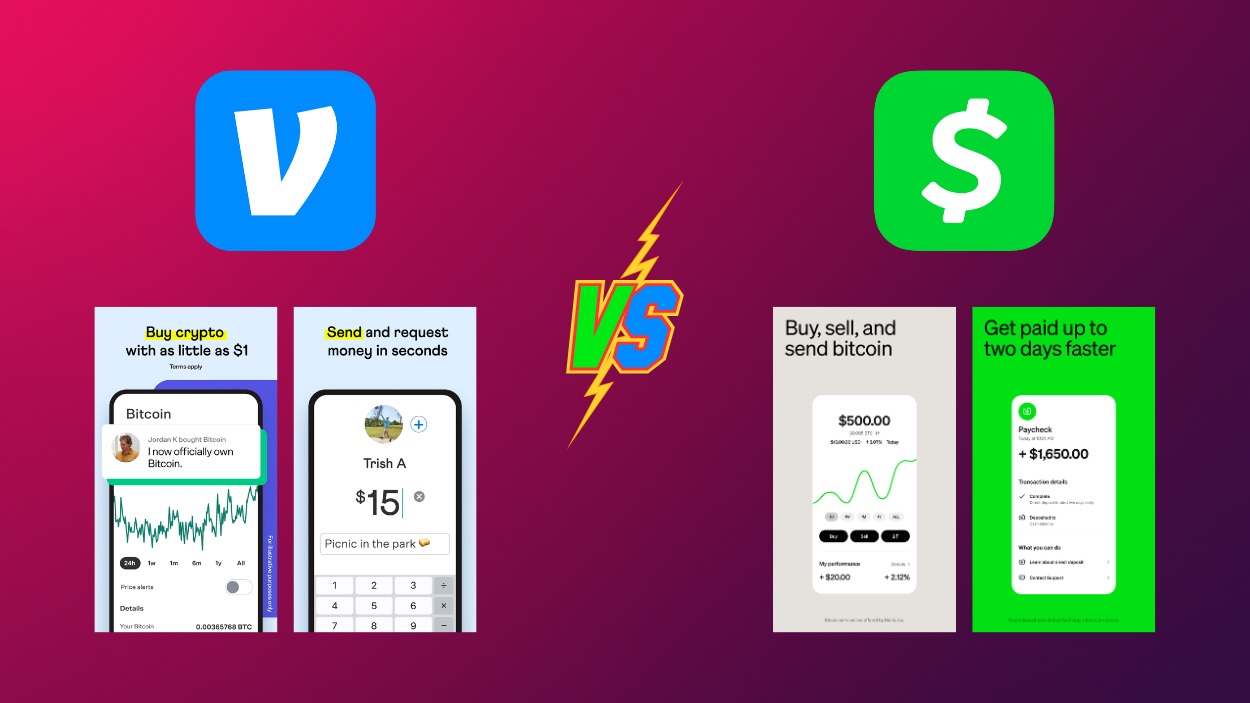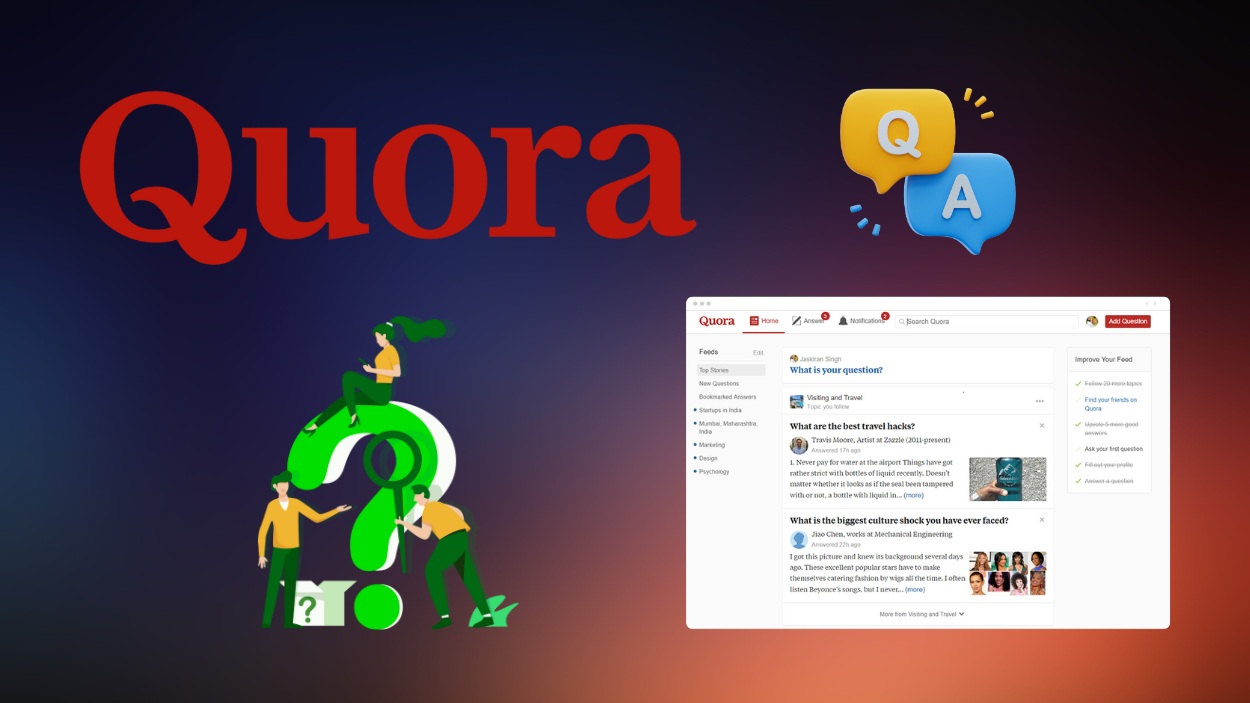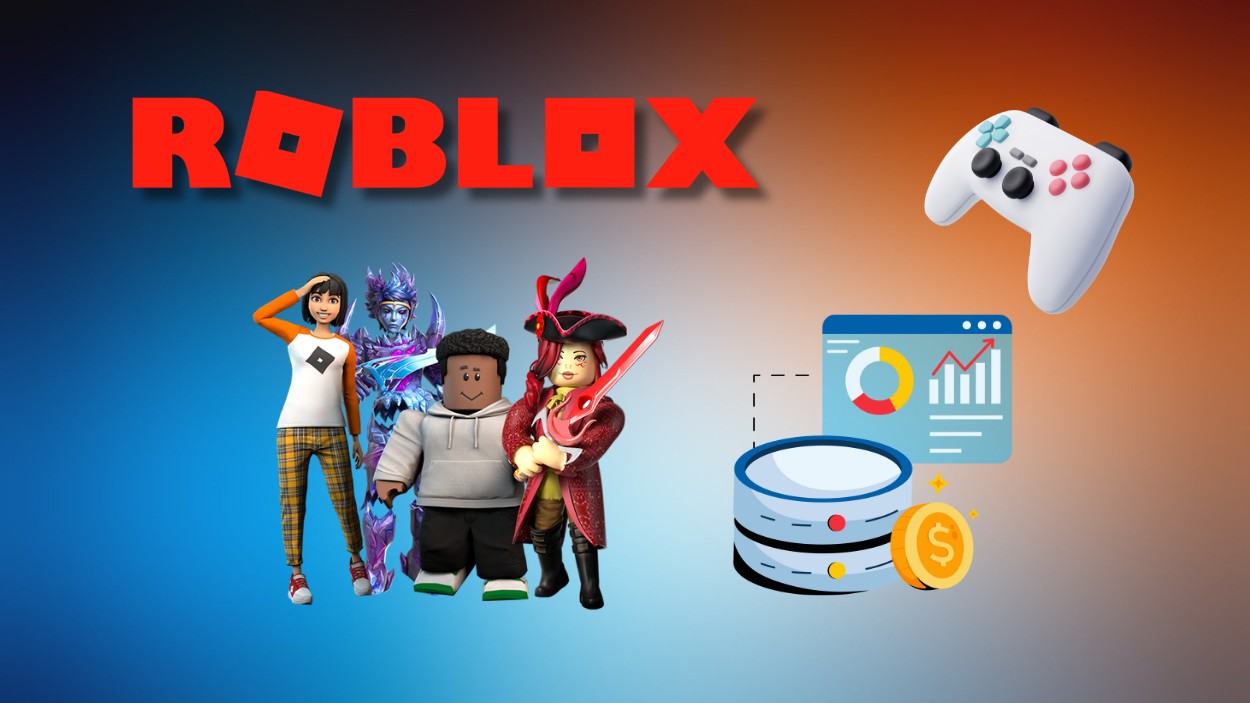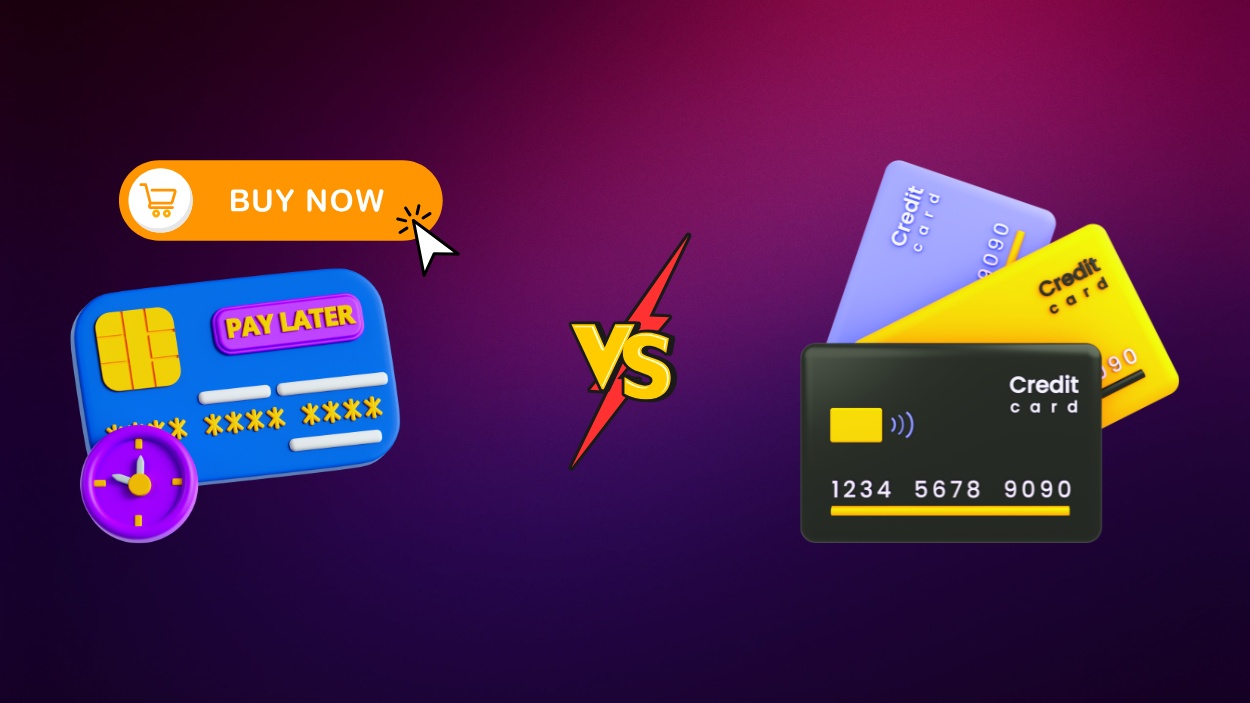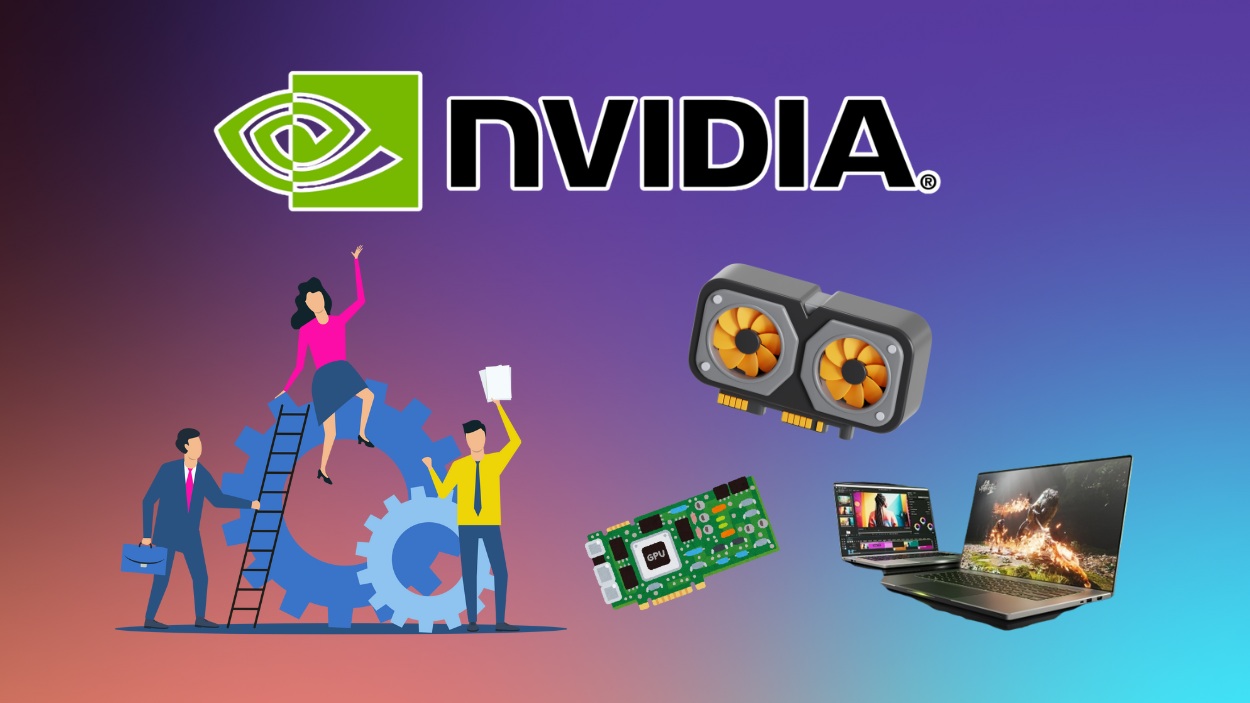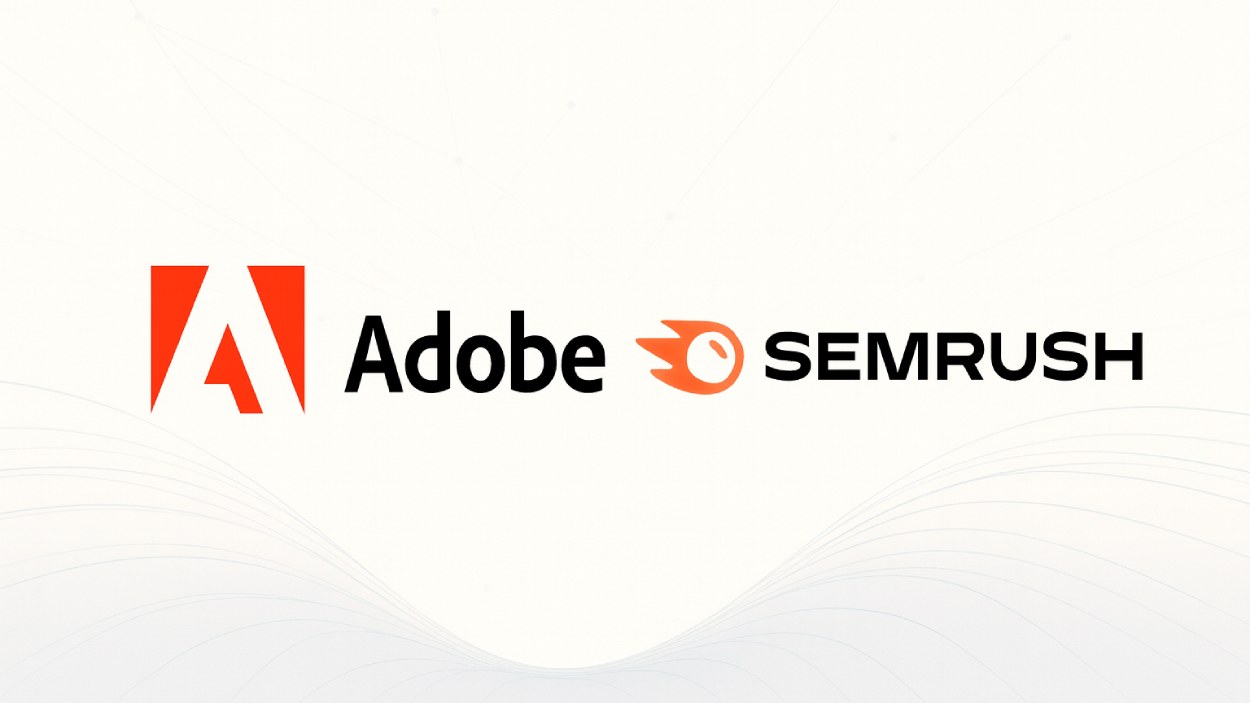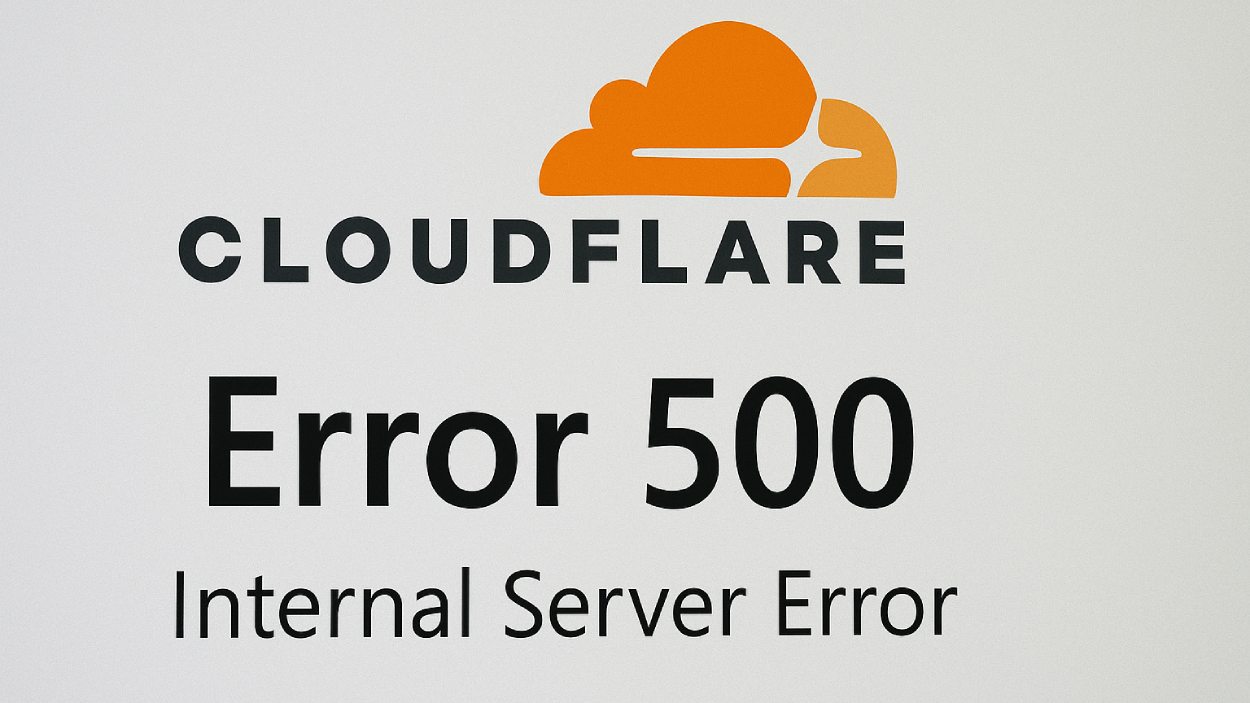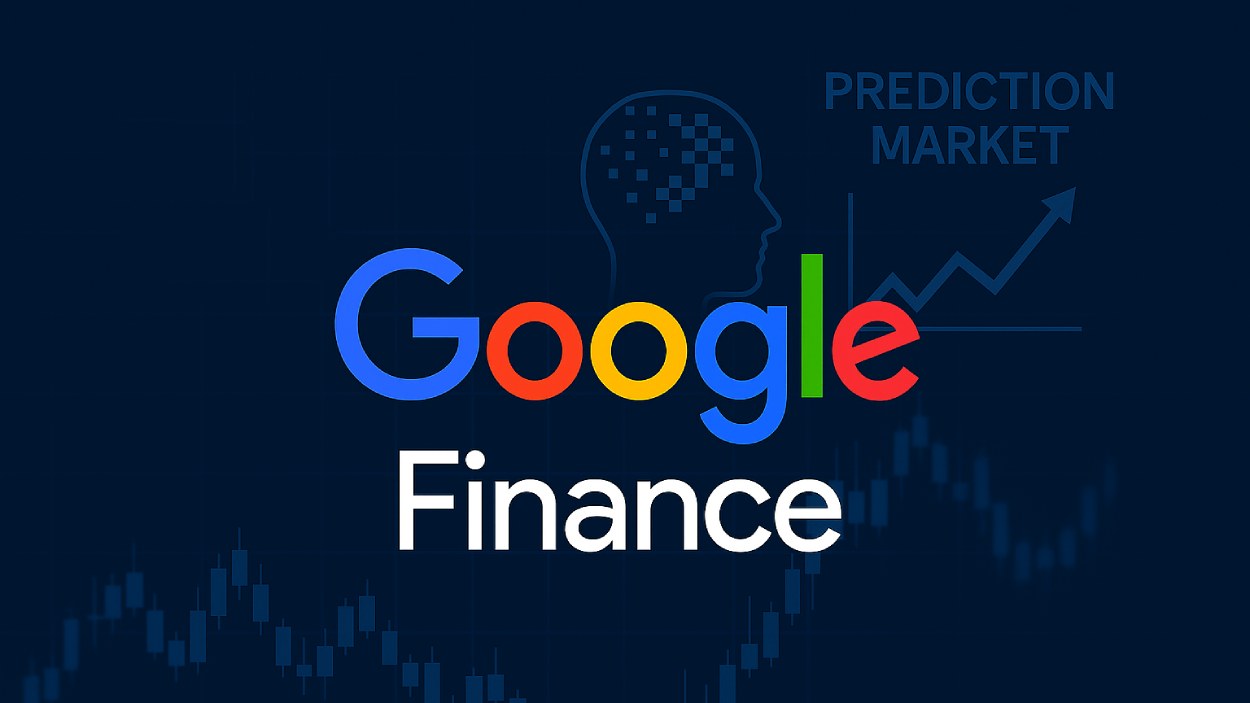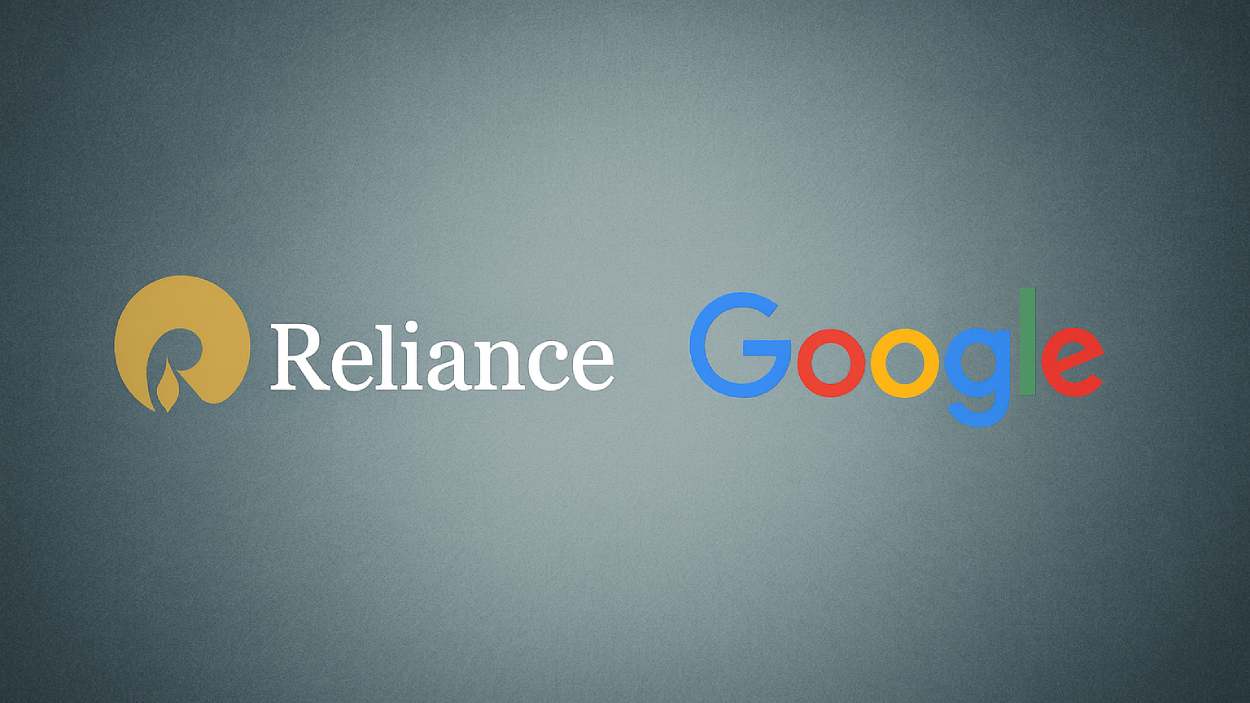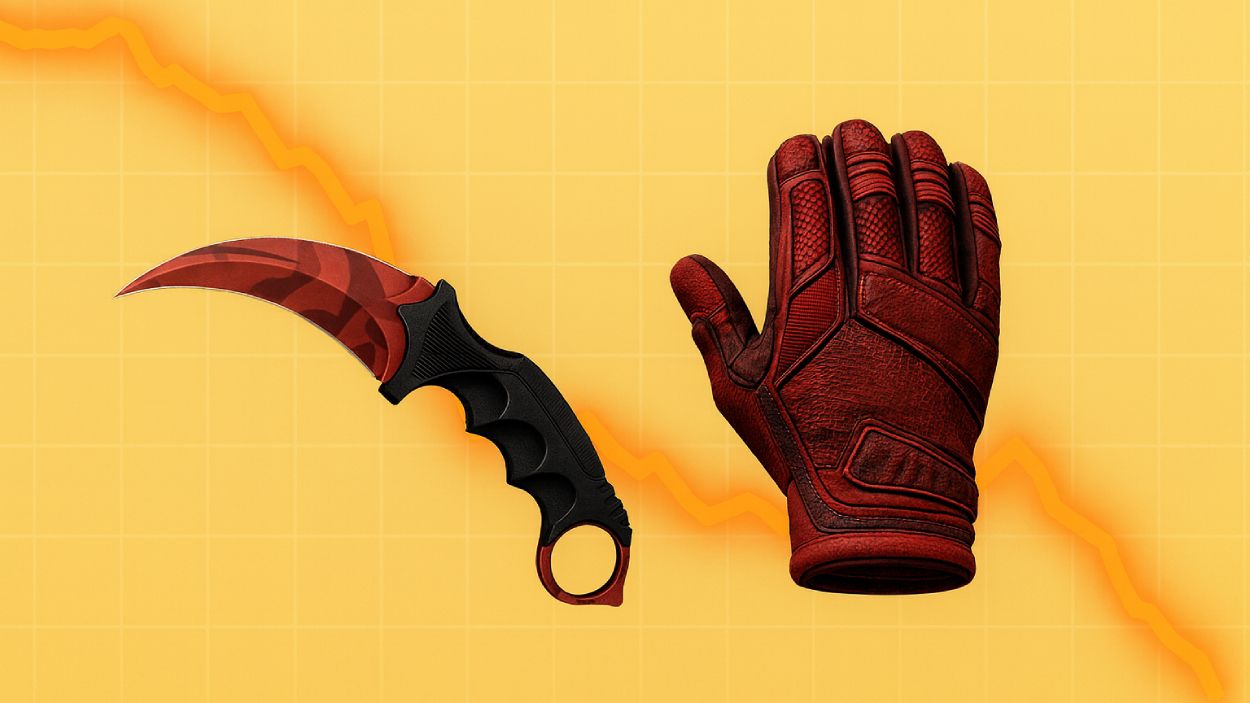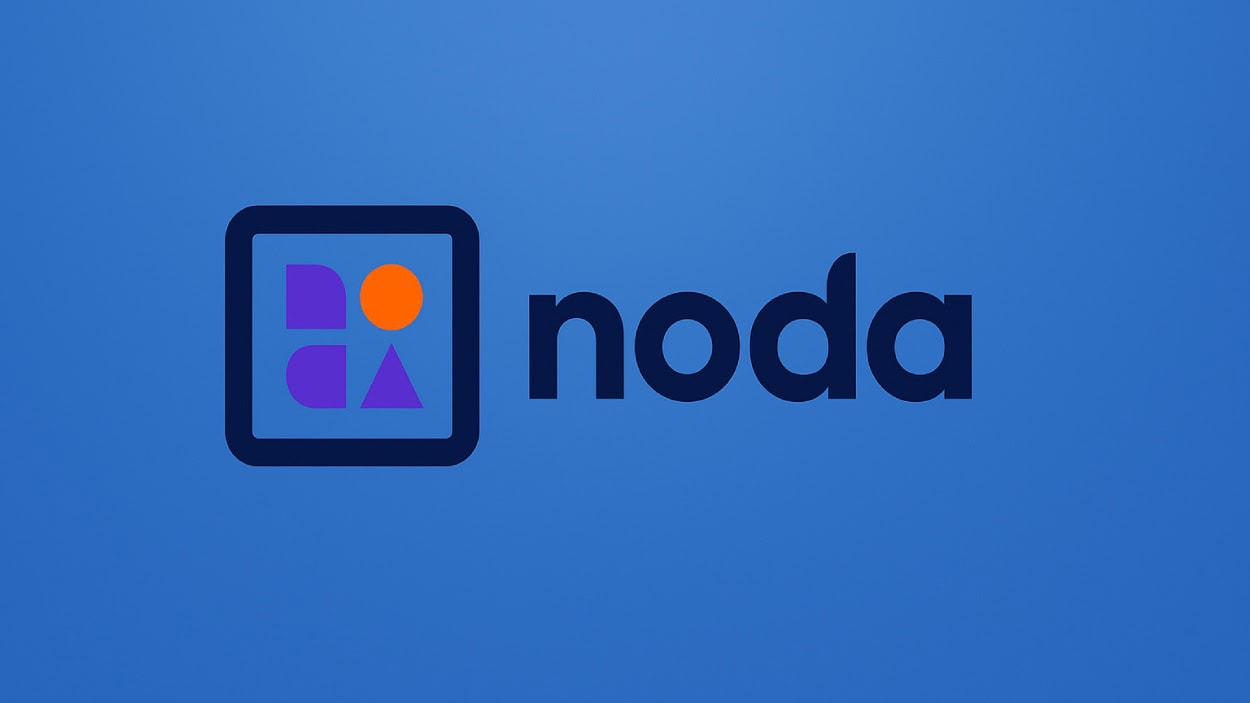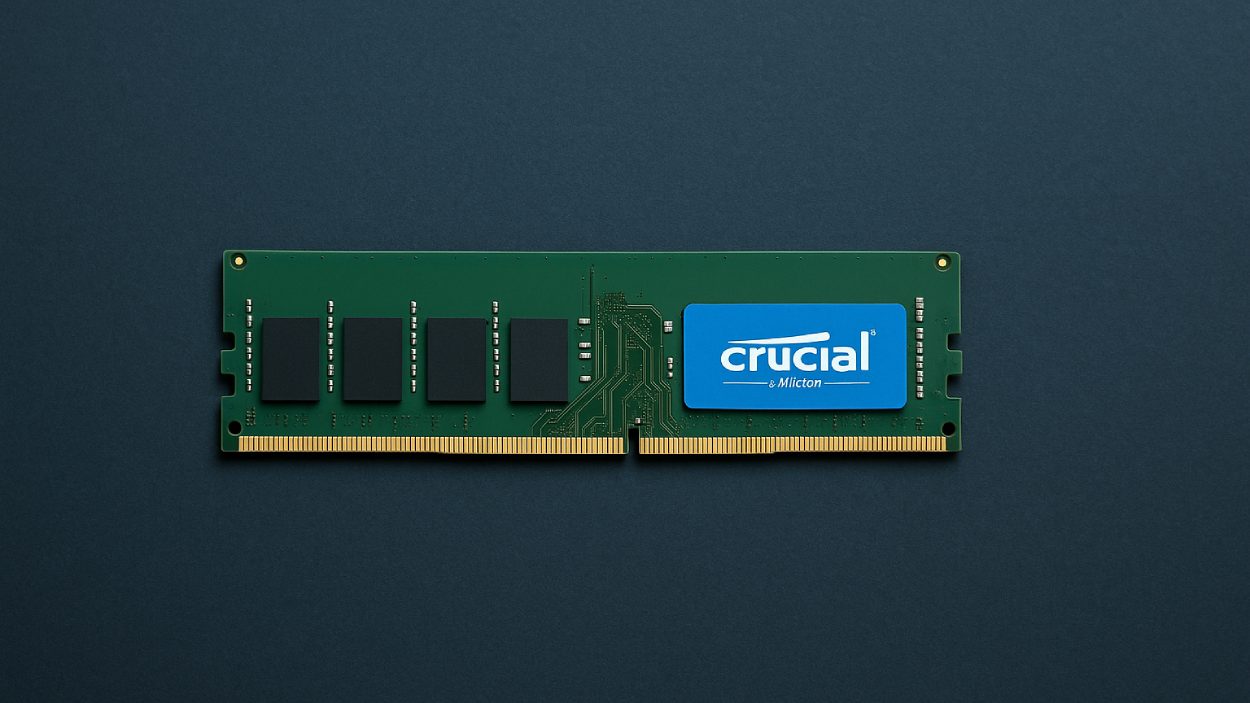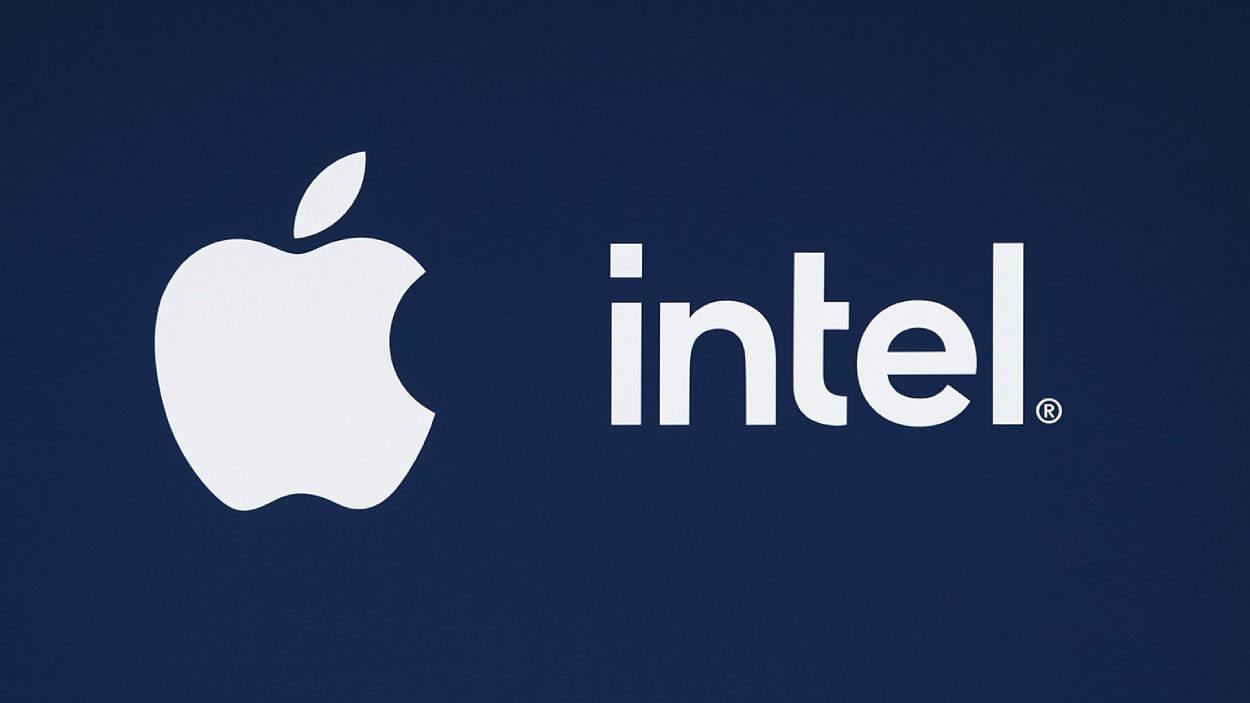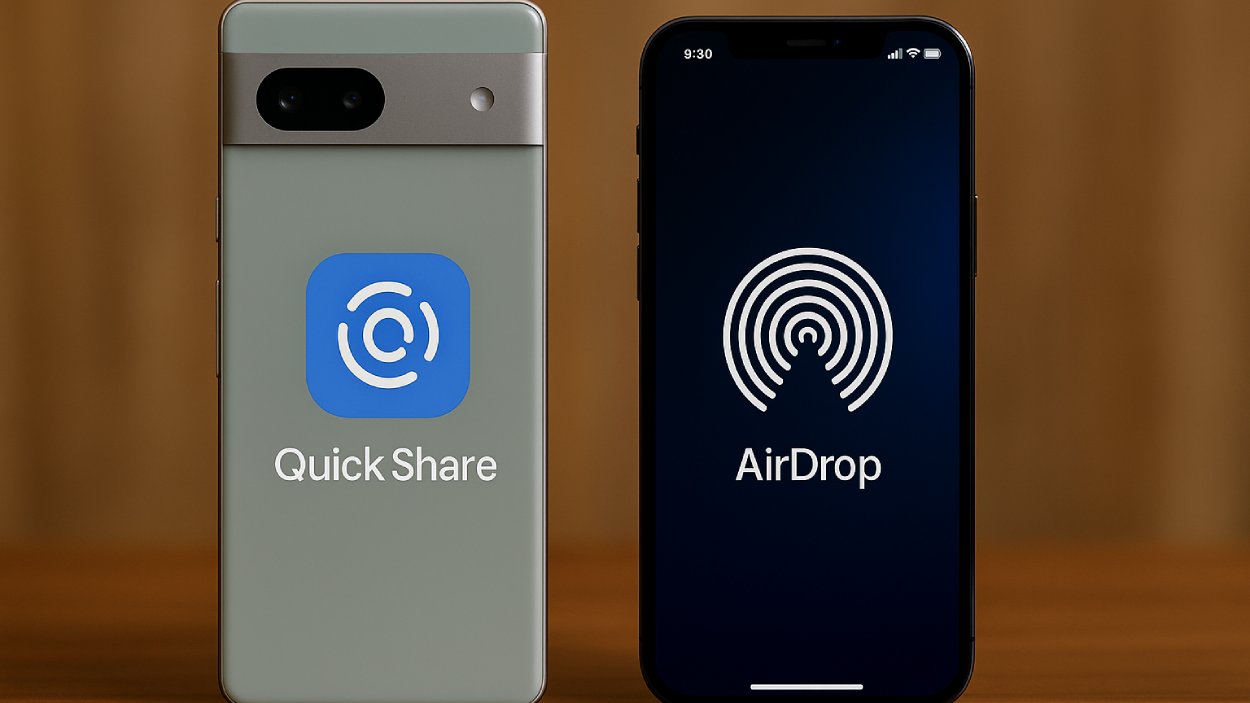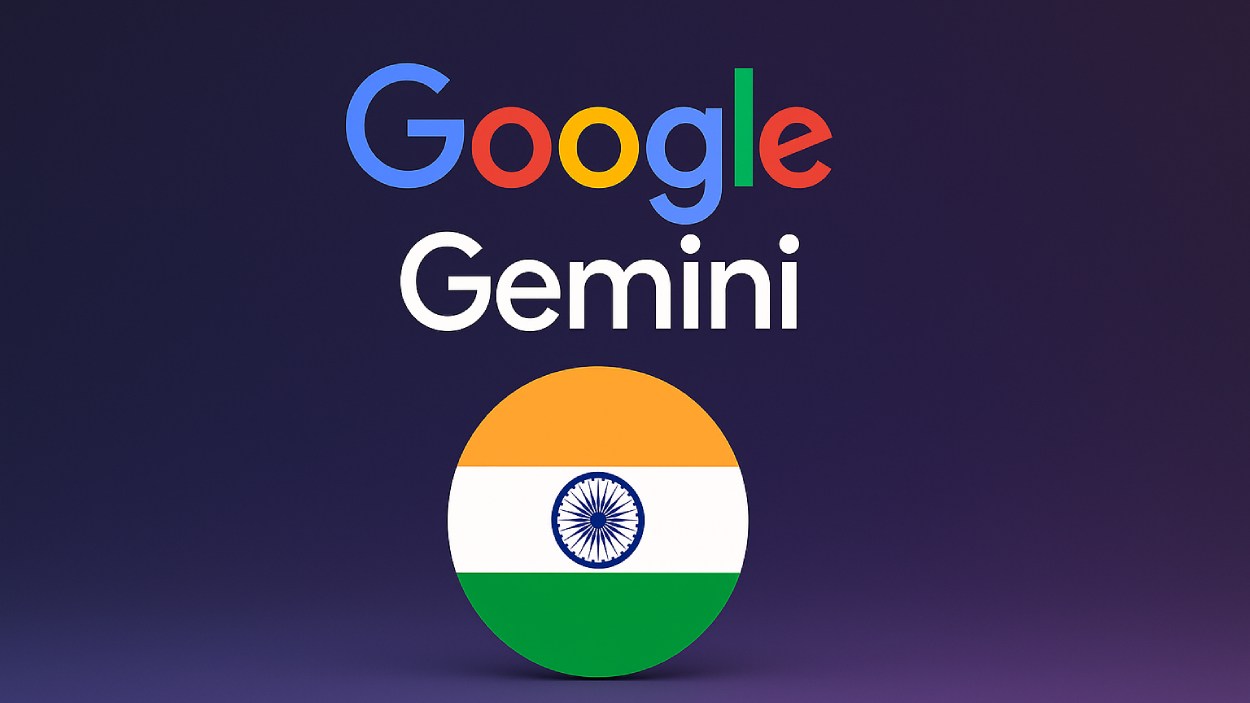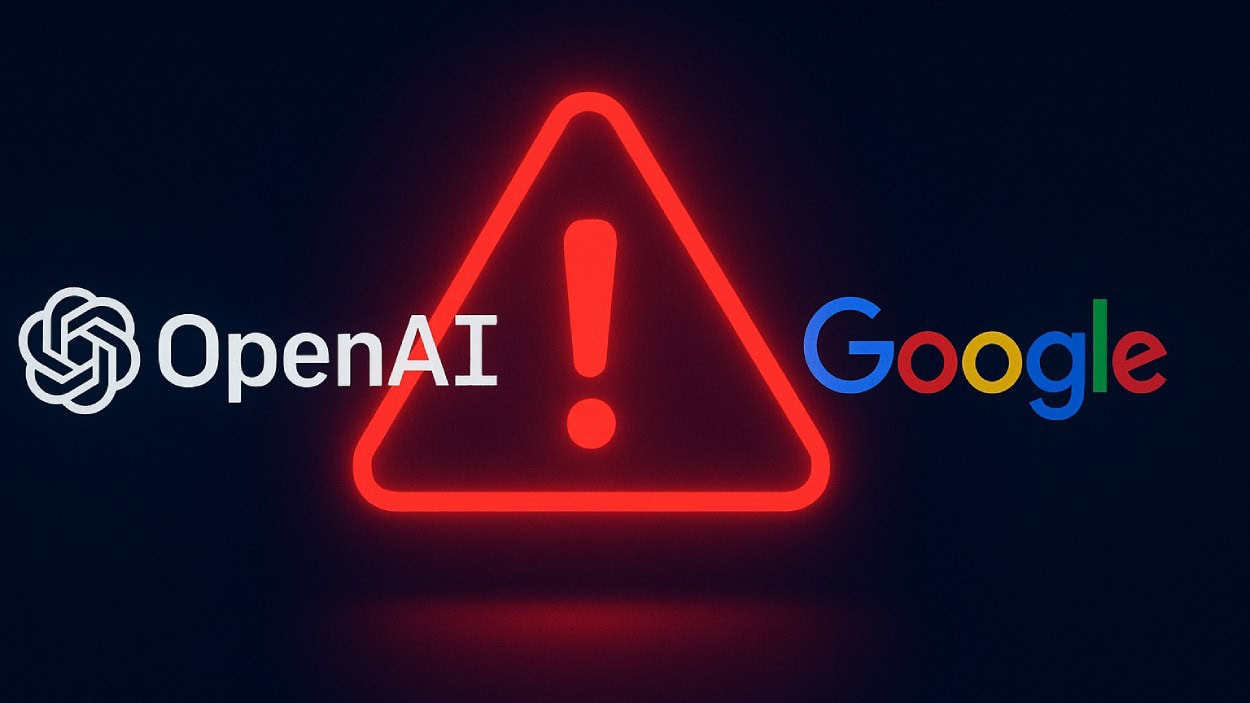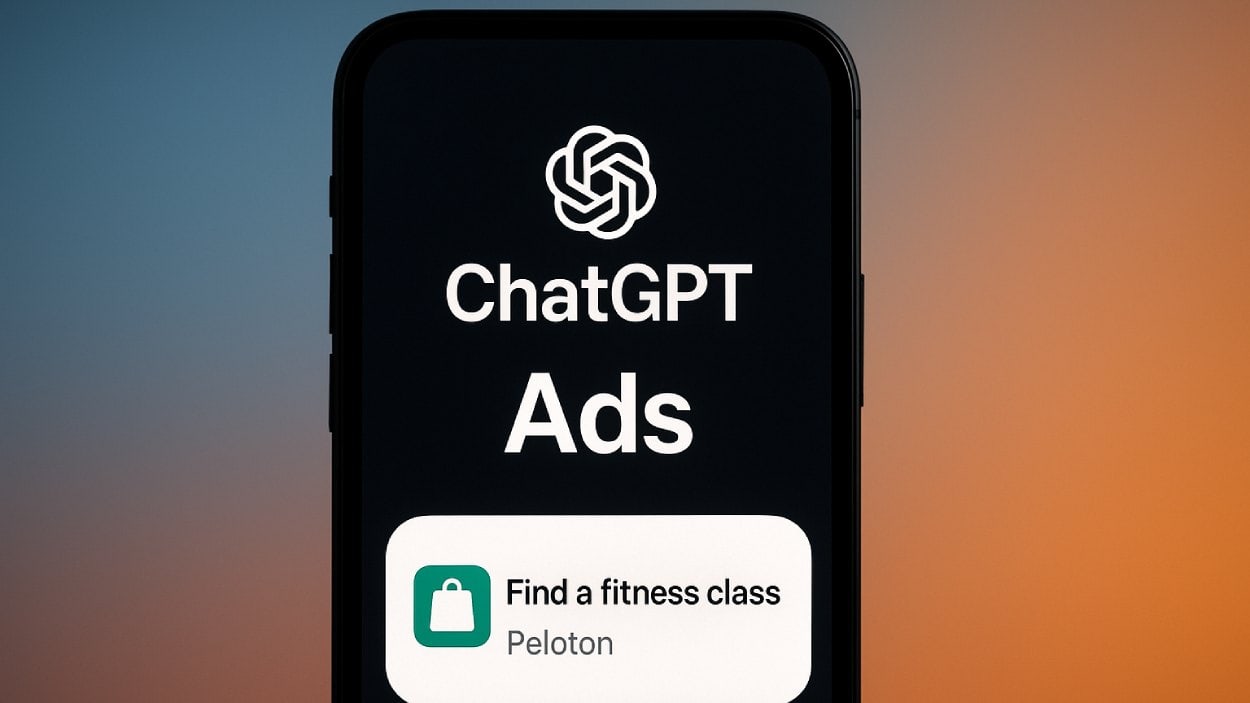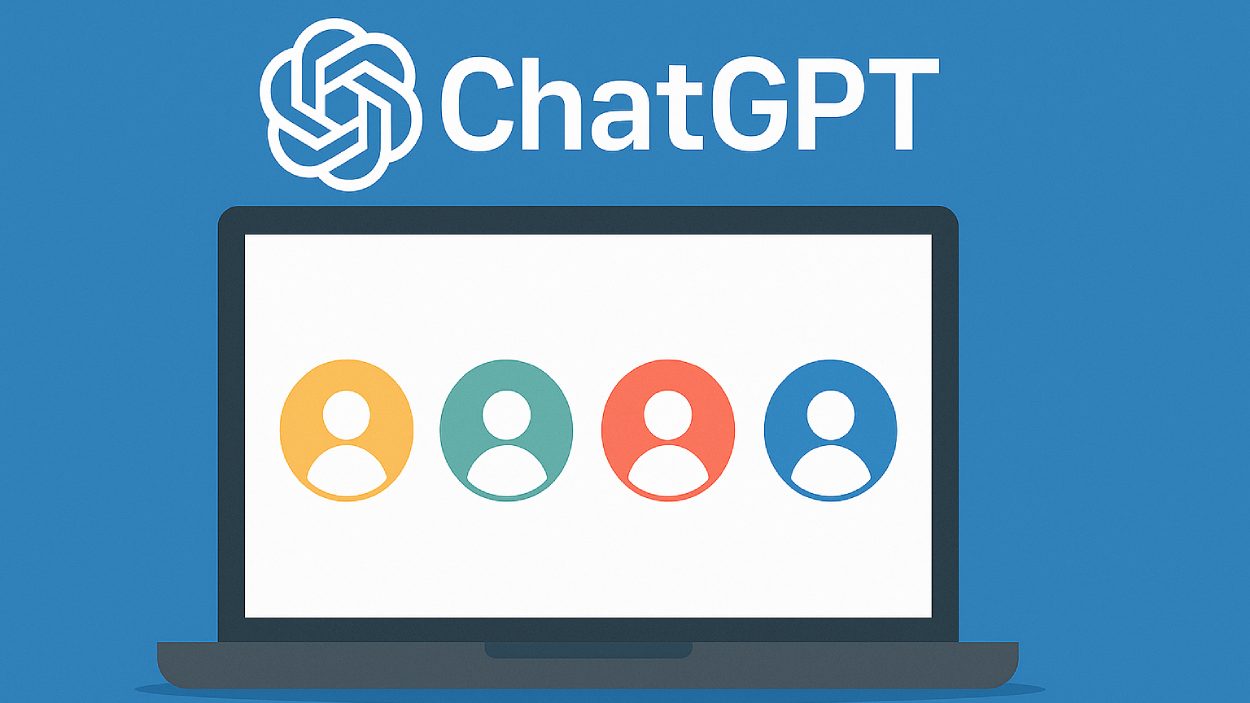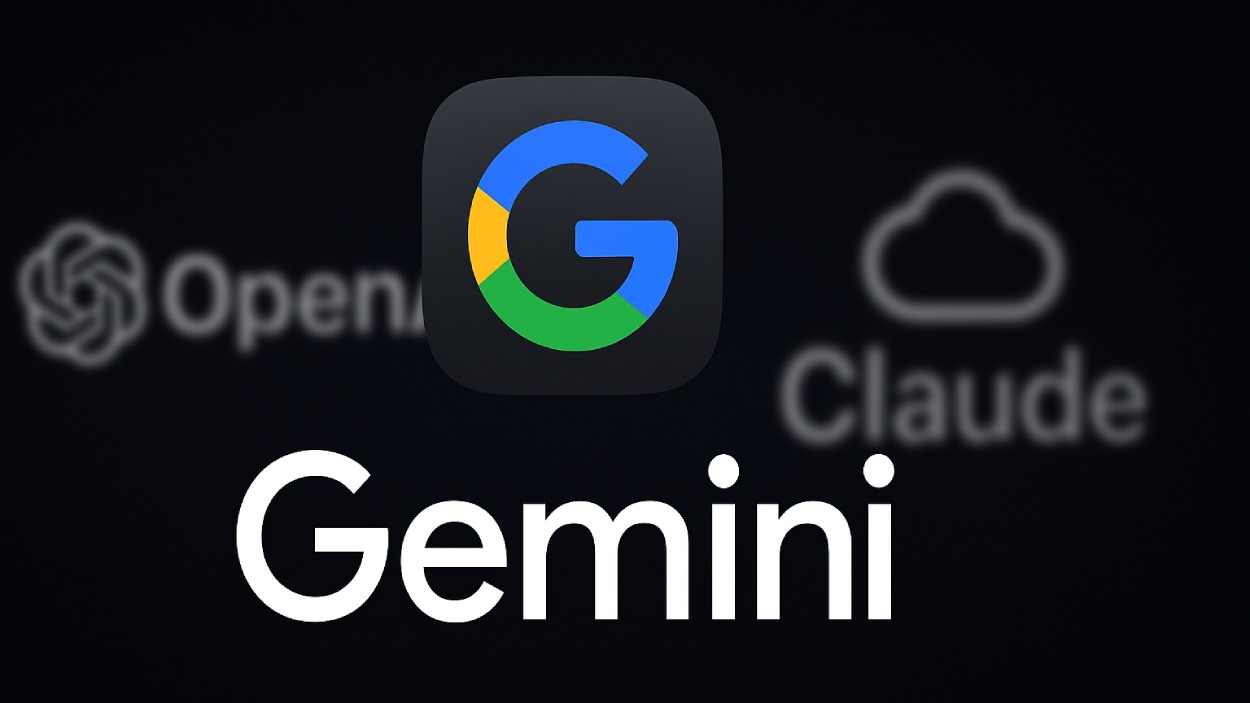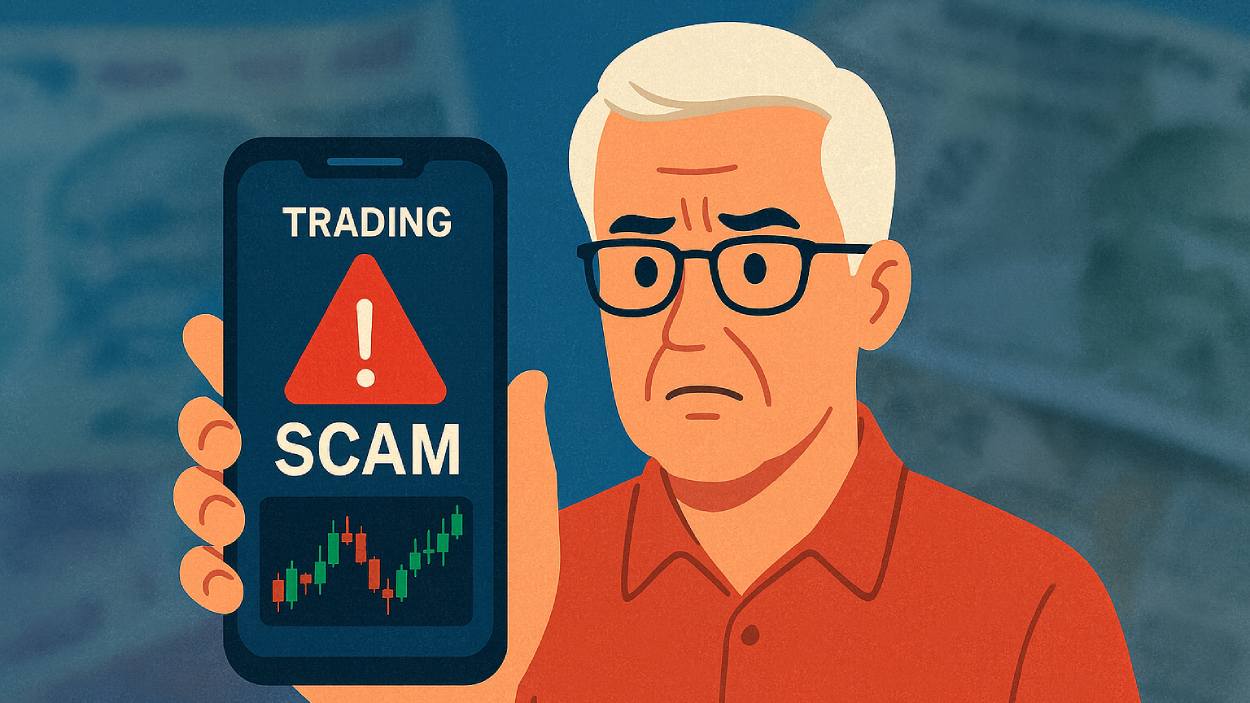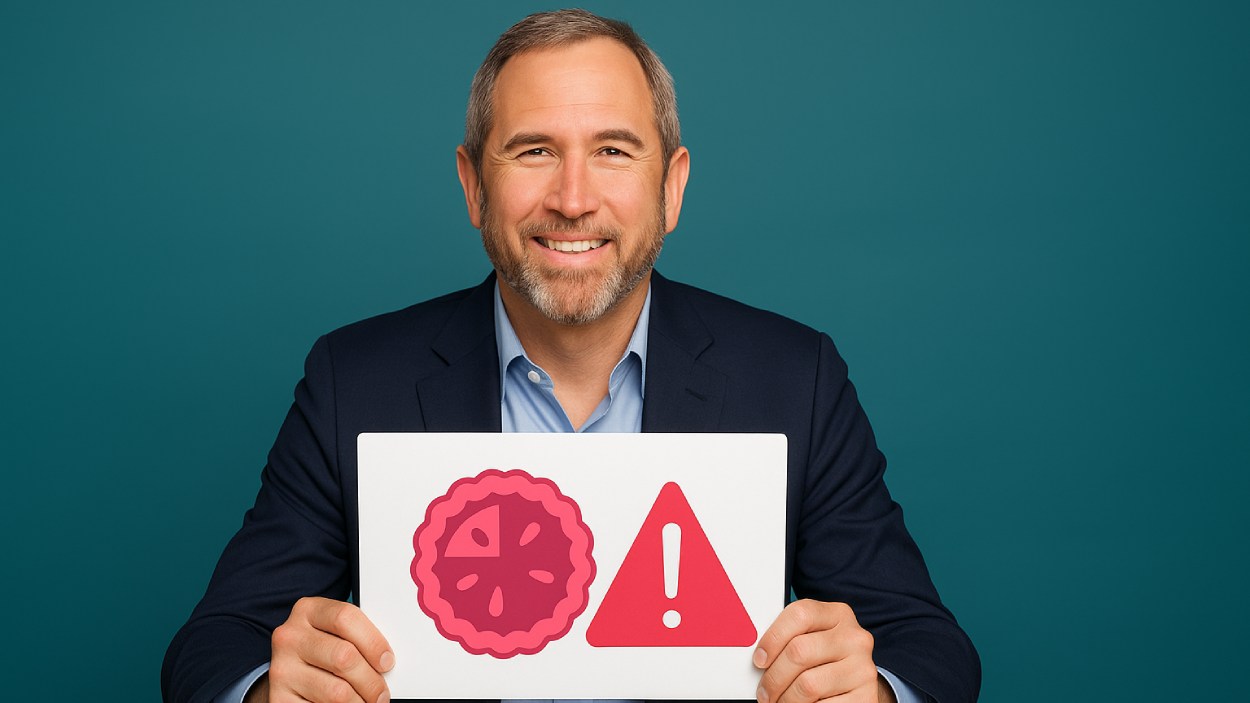When Lily launched her first blog in early 2020, affiliate marketing was just a side hustle, a hopeful attempt to monetize her niche interests in eco-living. Fast forward to 2025, and she’s managing multiple affiliate partnerships, generating over $12,000 per month in passive income. Stories like Lily’s are becoming increasingly common as affiliate marketing matures into a dominant force in digital commerce. Whether you’re a solo creator or a brand scaling partnerships, understanding the latest affiliate marketing statistics is crucial to staying ahead in this fast-evolving industry.
Editor’s Choice
- The global affiliate marketing industry is projected to reach $17.6 billion in value in 2025.
- 82% of brands now use affiliate marketing as a regular revenue channel, showing a steady uptick from 78%.
- The average affiliate conversion rate across all niches stands at 2.1% in 2025.
- In 2025, affiliate programs will contribute approximately 16% of all e-commerce sales globally.
- Affiliate earnings through influencer-driven campaigns grew by 26% year-over-year, highlighting the rise of creator-based commerce.
- Mobile devices now account for 57% of all affiliate-driven purchases, overtaking desktops in total sales volume.
- B2B affiliate programs experienced a 17% growth in participation rates, fueled by SaaS and enterprise tech adoption.
Affiliate Marketer Experience Breakdown
- A significant 44.5% of affiliate marketers have less than a year of experience, highlighting a surge of newcomers in the industry.
- 20.6% of respondents have been in affiliate marketing for 1–2 years, showing steady early-career engagement.
- 18.8% have 3–5 years of experience, indicating a healthy segment of mid-level professionals.
- Only 8.7% of affiliate marketers reported 6–10 years of experience, showing a decline in long-term participation.
- Just 7.4% have been in the industry for more than 10 years, suggesting affiliate marketing still trends young.
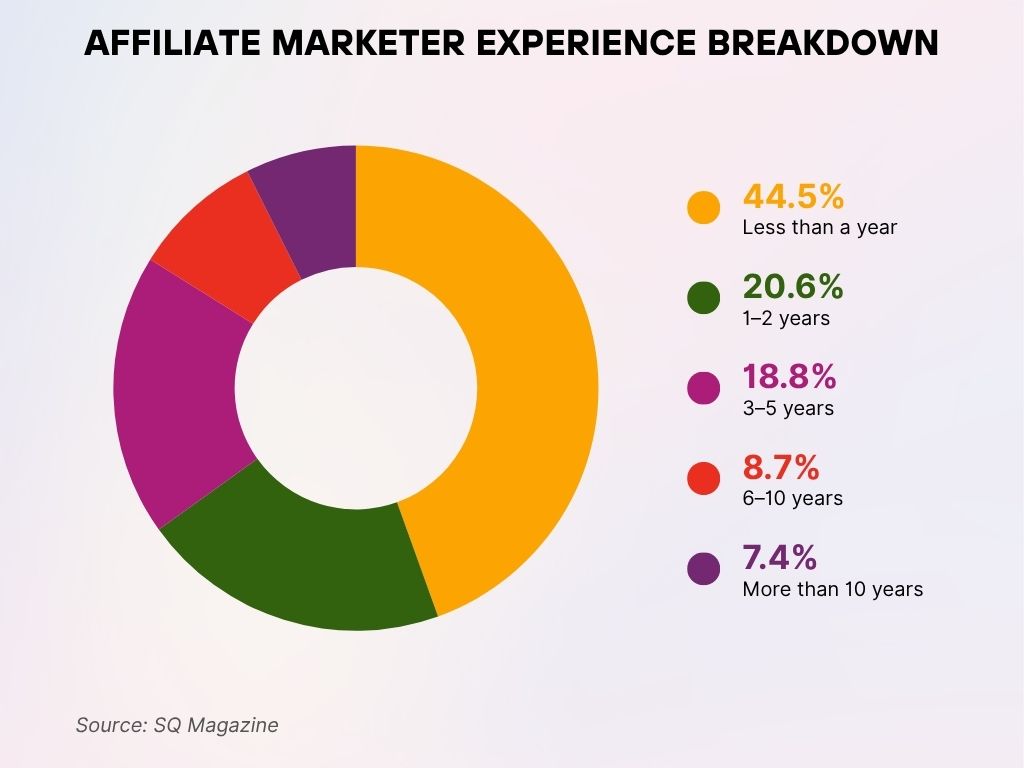
Global Affiliate Marketing Industry Growth
- The global affiliate marketing sector is worth $17.6 billion in 2025, showing a compound annual growth rate (CAGR) of 8.9% since 2020.
- North America continues to lead, accounting for 41% of global affiliate revenues, with Europe close behind at 31%.
- APAC markets are growing fast, especially in India and Southeast Asia, where affiliate marketing adoption has increased by 22% in the past year.
- Affiliate marketing represents 16% of total global eCommerce revenue in 2025.
- AI-driven affiliate management tools are being adopted by 38% of networks, optimizing commission structures and fraud detection.
- Nearly 72% of global advertisers have expanded their affiliate budgets compared to 2024.
- The number of active affiliate marketers worldwide surpassed 12 million in 2025.
- Emerging markets such as Brazil, Nigeria, and Indonesia are seeing affiliate program growth rates above 25% YoY.
- Partnerships with local e-commerce platforms are contributing to regional growth outside traditional Western markets.
- Affiliate industry jobs, including campaign managers and analysts, grew by 19% globally in the last 12 months.
Most Profitable Affiliate Marketing Channels
- SEO-based content remains the most profitable channel, driving 38% of affiliate revenue in 2025.
- Social media platforms contribute 27% of affiliate earnings, led by Instagram and TikTok.
- Email marketing generates 14% of affiliate income and maintains a high ROI due to targeted messaging.
- YouTube content accounts for 11% of affiliate revenues, with rising interest in long-form product reviews.
- Podcasts are responsible for around 5% of affiliate-driven sales.
- Paid traffic (e.g., Google Ads, Facebook Ads) is growing again, making up 9% of affiliate sales.
- Native advertising accounts for 4% of revenues and is often used to amplify top-performing campaigns.
- Influencer affiliate links on livestream shopping platforms like Amazon Live are driving fast conversion rates, with 1.7x higher AOV.
- Forums and community platforms (e.g., Reddit, Discord) contribute a modest 2% but have high engagement rates.
- QR code integrations in offline media and events now enable affiliates to tap into hybrid commerce, contributing around 0.5% of total revenue.
Consumer Appetite for Financial Products (US vs. Canada)
- Credit cards top the list, with 29% of Canadian affiliates and 15% of US affiliates expecting high consumer interest.
- Investments follow closely: 25% (US) vs. 19% (CA), showing strong growth expectations in both regions.
- Savings products show a notable gap: 21% of US affiliates vs. just 10% in Canada.
- Mortgages see more interest in Canada (21%) than in the US (8%).
- Personal loans are expected to rise evenly: 15% (US) and 14% (CA).
- Insurance growth is anticipated by 10% of US affiliates and 5% of Canadian ones.
- Checking accounts trail with 6% (US) and 2% (CA), expecting growth.
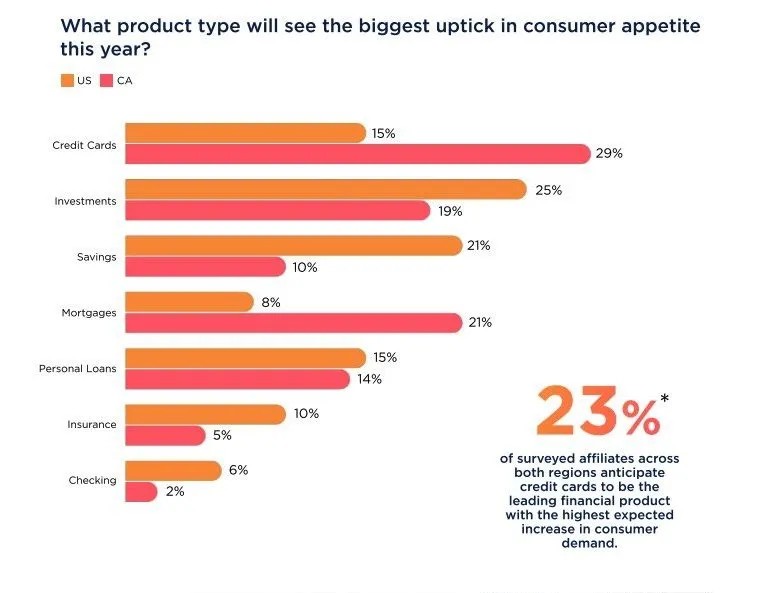
Top Affiliate Marketing Platforms and Networks
- ShareASale, CJ Affiliate, and Impact continue to dominate in 2025, hosting over 450,000 active publishers combined.
- Amazon Associates remains the largest program by volume, but its average commission rate has dropped to 2.4% in 2025.
- Rakuten Advertising ranks as the top network for luxury retail brands, with a 26% YoY increase in premium merchant sign-ups.
- ClickBank continues to lead in digital product offers, with affiliates earning over $3.2 billion in total commissions to date.
- PartnerStack has surged in the B2B affiliate sector, with a 31% increase in SaaS partnership revenues this year.
- Awin now manages over 21,000 global brands.
- Refersion and Everflow have become favorites among direct-to-consumer (DTC) brands for their customizable dashboards.
- The average network payout time has reduced to 29 days in 2025.
- Affiliate platforms with built-in influencer tracking tools report a 42% higher ROI compared to those without.
- Blockchain-powered affiliate platforms are emerging, with smart contract payments enabling near-instant, tamper-proof commissions.
Influencer and Content Creator Roles in Affiliate Marketing
- In 2025, over 63% of content creators identify affiliate marketing as a primary source of income.
- Influencers on TikTok and Instagram are driving over 52% of affiliate product discovery among Gen Z consumers.
- Micro-influencers (fewer than 100,000 followers) report higher engagement rates and 28% better conversion performance than macro-influencers.
- YouTube influencers lead in high-ticket affiliate categories like tech, home appliances, and online education.
- Affiliate link click-through rates (CTR) are highest among creators using product walkthroughs or “unboxing” formats.
- Live video platforms like Twitch and YouTube Live now support real-time affiliate links, boosting conversion rates by up to 35%.
- Creators using affiliate widgets or shoppable posts on blogs see 21% higher time-on-page and improved monetization.
- Platforms like LTK (LikeToKnow.it) and ShopMy continue to empower fashion and beauty creators to drive affiliate sales seamlessly.
- Influencers using personalized affiliate codes enjoy 17% more repeat purchases, signaling better brand affinity.
- The average earnings per affiliate link shared by a mid-tier content creator in 2025 are $3.18.
Top 10 Affiliate Marketing Niches by Market Share
- Fashion leads the affiliate marketing space with a dominant 23.27% share.
- Sports & Outdoors comes second, capturing 18.16% of the market.
- The Health/Wellness & Beauty niche holds a solid 13.81% share.
- Travel maintains relevance with 10.74%, showing strong consumer interest.
- Home & Garden represents 8.70% of affiliate marketing focus.
- Computers & Electronics account for 6.65%, driven by tech demand.
- Education & Training contributes 5.37%, reflecting growth in online learning.
- The Business niche secures 5.12%, showing moderate engagement.
- Financial & Insurance follows with 4.35%, indicating room for expansion.
- High-End & Luxury Stores round out the top 10 at 3.83%.
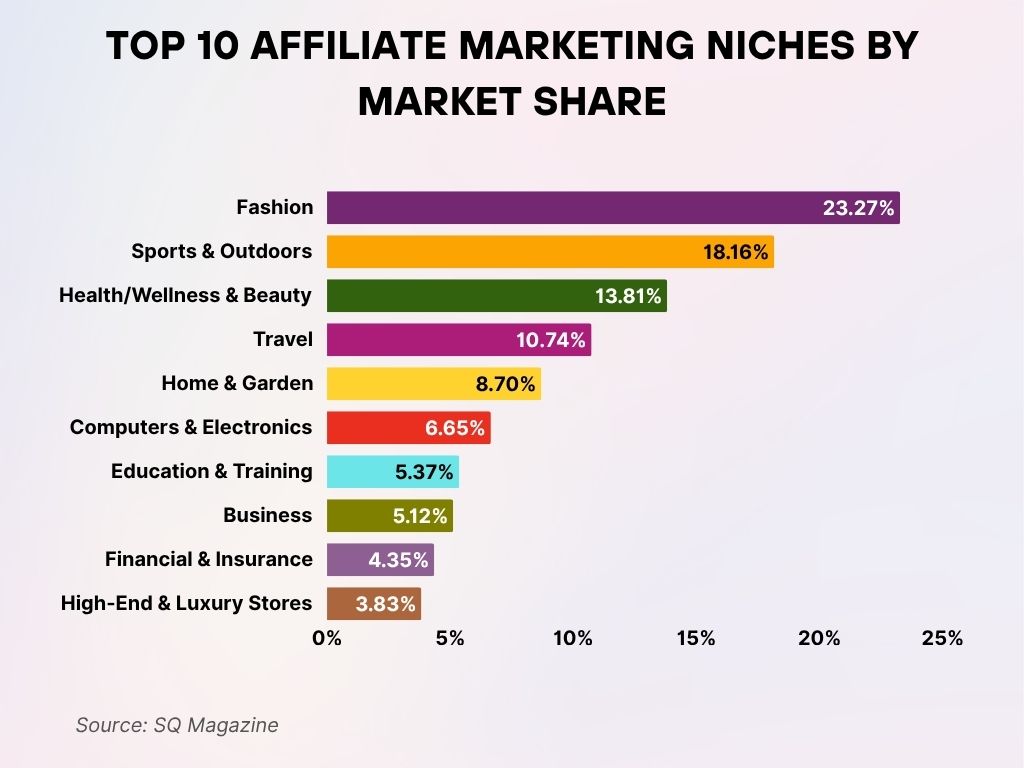
Mobile vs Desktop Affiliate Conversion Rates
- In 2025, mobile devices account for 57% of affiliate conversions, surpassing desktops, which now stand at 40%.
- Average order value (AOV) on desktop remains higher at $84.10, while mobile trails slightly at $69.90.
- Tablet-based conversions have stabilized at 3%, often related to leisure browsing and gift shopping.
- Mobile-first affiliate campaigns deliver 23% higher engagement, especially when paired with responsive landing pages.
- Conversion rate optimization (CRO) for mobile traffic has led to a 19% decrease in bounce rates in affiliate funnels.
- Mobile apps with embedded affiliate links, such as lifestyle, fitness, and recipe apps, see CTR rates over 7%.
- Push notifications and in-app banners generate 2.5x higher interaction than traditional mobile web banners.
- Affiliate marketers using AMP (Accelerated Mobile Pages) report 11% faster load times, directly contributing to better conversion metrics.
- Mobile attribution tools like Branch and Adjust help track complex affiliate journeys, supporting accurate commission tracking.
- Geolocation targeting on mobile leads to 33% higher local affiliate purchases, especially for food delivery, events, and local services.
Affiliate Marketing ROI Benchmarks
- The average ROI for affiliate campaigns in 2025 is 1:11, meaning $11 returned for every $1 spent.
- B2C campaigns continue to yield better ROI than B2B, at 12:1 vs 8:1, respectively.
- Top-performing affiliates report conversion rates exceeding 5.4%, particularly in high-trust verticals like personal finance.
- Return on ad spend (ROAS) for paid affiliate campaigns has increased to 4.3x, thanks to better targeting and automation.
- Email-driven affiliate campaigns show the highest ROI at 14:1, especially among niche audience lists.
- Influencer-based affiliate programs deliver 10:1 ROI on average, but require higher upfront investment in relationship-building.
- The lifetime value (LTV) of customers acquired via affiliate links is often 22% higher than those from direct channels.
- A/B testing and behavioral segmentation are credited with increasing ROI by 18% on average for experienced affiliates.
- SaaS platforms offering affiliate programs report up to 33% lower churn among customers acquired through affiliate partners.
- 2025 marks the year when affiliate-driven sales surpass display advertising ROI across most verticals.
Affiliate Marketing’s Contribution to Publication Revenue
- 50% of respondents say that over half of their publication revenue comes from affiliate marketing.
- 17% report that only 0–5% of their revenue is affiliate-driven.
- 13% earn 31–50% of their revenue from affiliate marketing.
- 8% generate 21–30% from affiliate sources.
- 6% of publishers get 11–20% of their income via affiliate marketing.
- 3% report 6–10% of their revenue comes from affiliate programs.
- 3% of respondents are unsure or don’t know their affiliate revenue share.
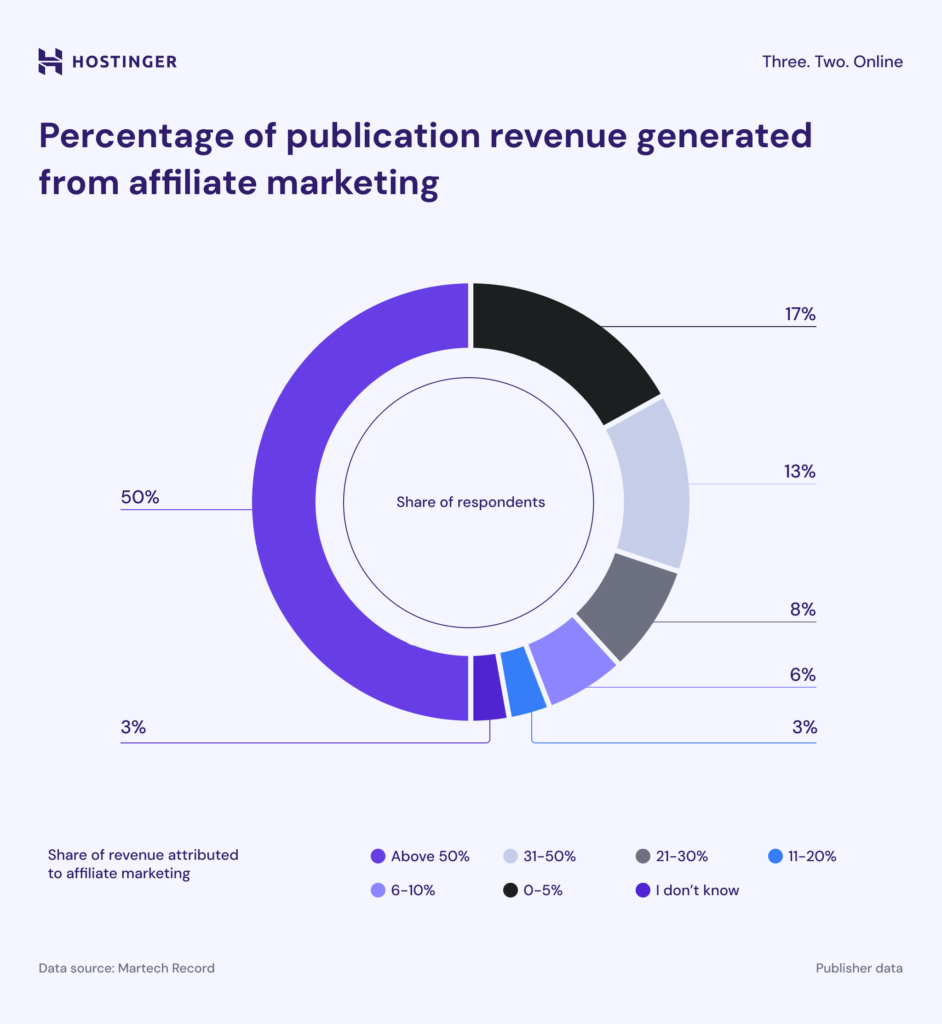
Consumer Behavior and Click-Through Trends
- 68% of online shoppers say they have made a purchase based on an affiliate link recommendation.
- Consumers trust product comparisons and “top 10” lists the most, with CTR rates of 9.2% in this content type.
- Visual product reviews with embedded affiliate links now achieve 34% higher engagement than text-only formats.
- The average click-through rate (CTR) across all affiliate formats stands at 4.6% in 2025.
- Affiliate links positioned above-the-fold receive 2.3x more clicks than those placed at the bottom.
- Time spent on affiliate landing pages has increased to 42 seconds on average, signaling improved relevance and user experience.
- Mobile users exhibit a stronger tendency to click affiliate links in lifestyle and impulse-buy categories.
- Product scarcity messaging (e.g., “Only 3 left!”) boosts CTR by up to 29% in limited-offer campaigns.
- Personalized affiliate emails achieve 6.2% click rates, outperforming non-targeted campaigns by 2.5x.
- Consumer preference for video content is fueling affiliate growth, as video reviews generate 8.3% CTR, the highest among all formats.
Regional and Country-Based Affiliate Marketing
- The United States leads global affiliate marketing revenue in 2025, accounting for 37% of the industry’s earnings.
- The United Kingdom ranks second, contributing approximately 11% of total global affiliate sales.
- Germany, Canada, and Australia make up the next tier, each generating between 4% to 6% of global affiliate revenue.
- In the Asia-Pacific region, India is the fastest-growing affiliate market, with a 31% YoY increase in affiliate-related sales.
- Japan and South Korea are becoming B2B affiliate marketing hubs, especially in tech and finance verticals.
- Latin America, led by Brazil and Mexico, reports a 22% increase in affiliate program adoption among local e-commerce platforms.
- In Africa, Nigeria and South Africa are pioneering affiliate education programs and influencer-driven networks.
- European Union countries have seen a shift toward compliance-focused affiliate platforms, especially post-DMA regulations.
- Local language content has driven CTR increases of 40% in non-English speaking markets.
- Cross-border affiliate traffic has surged, with 15% of conversions in 2025 coming from international audiences.
Average Monthly Affiliate Income by Niche
- Education & E-learning tops the chart with an impressive $15,551 in average monthly affiliate income.
- Travel follows closely, generating $13,847 per month on average.
- Beauty & Skincare earns affiliates around $12,476 monthly.
- The Finance niche brings in $9,297, making it a strong performer in the financial sector.
- Technology affiliates average $7,418 per month, reflecting high-value products and demand.
- Digital Marketing and Health & Fitness generate nearly the same, at $7,218 and $7,194, respectively.
- E-commerce earns a moderate $5,967, showing a broad opportunity.
- Home & Garden brings in $5,095, while Sports & Outdoors earns $4,849 monthly.
- Entertainment affiliates average $4,416, appealing to a wide audience.
- Lower-income niches include Food & Nutrition ($3,015), Fashion ($2,049), and Personal Development ($1,566).
- Parenting & Family, Arts & Crafts, and Pets & Animals fall below $1,200 per month.
- Sustainability & Environment ranks lowest with just $555 monthly, highlighting niche saturation or lower affiliate payouts.
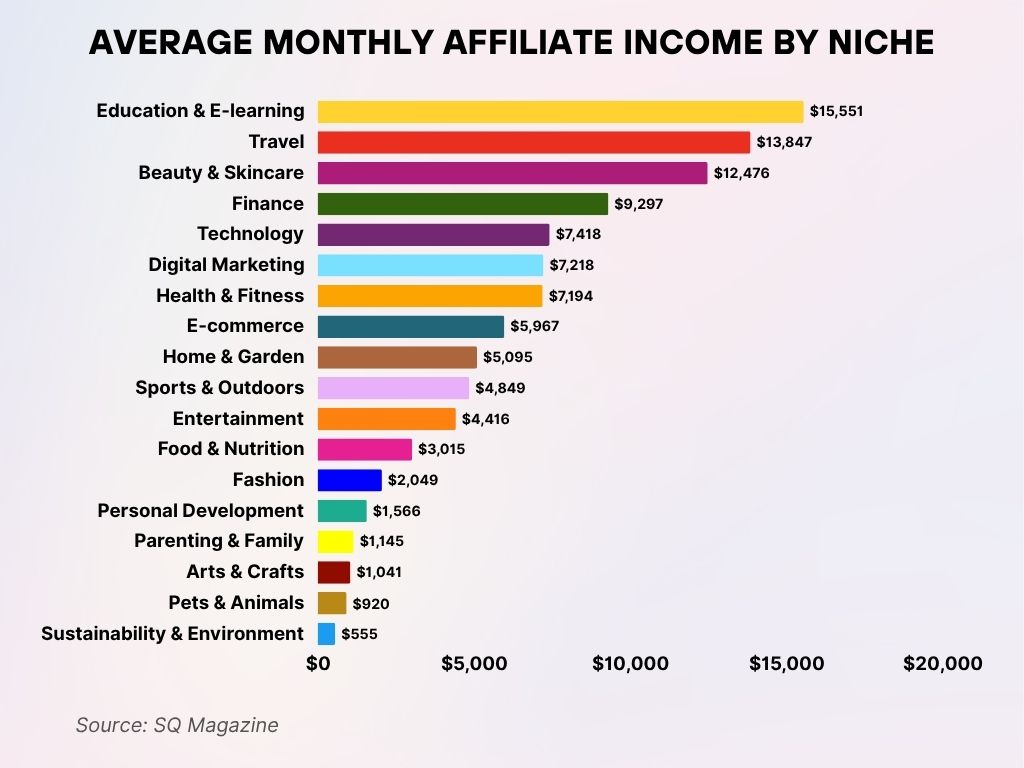
Regulatory and Compliance in Affiliate Marketing
- FTC disclosure requirements remain strict in 2025, with a renewed push for clear, front-of-content disclosures.
- The Digital Markets Act (DMA) in the EU mandates full transparency on affiliate earnings, impacting multinational marketers.
- California’s CPRA now applies to affiliate tracking, prompting marketers to adopt consent-based tracking methods.
- Platforms are enforcing stricter affiliate content standards, penalizing misleading or clickbait claims.
- Financial affiliate content must comply with FINRA and SEC advertising rules in the US, limiting commission-heavy tactics.
- Affiliate networks are now including GDPR-compliant tools as standard for EU-based affiliates.
- AI content labeling requirements are emerging, requiring affiliate creators to disclose generative content use.
- Google’s March 2025 update penalizes sites that hide or obscure affiliate disclaimers.
- The number of affiliate compliance audits conducted by brands has risen by 19% YoY, increasing accountability.
- Regulatory clarity has helped strengthen affiliate credibility, with 64% of consumers trusting clearly disclosed links more.
Forecast for Affiliate Marketing Through 2030
- By 2030, the affiliate marketing industry is projected to exceed $25 billion globally, driven by automation and data personalization.
- Voice commerce and smart home devices will account for 6-8% of affiliate sales within the next five years.
- AI-driven personalization engines will power over 60% of affiliate recommendations by 2028.
- Emerging platforms like Web3 marketplaces and metaverse commerce are forecasted to create $3 billion in affiliate opportunities by 2030.
- Niche affiliate communities (forums, Discord groups) are expected to dominate micro-vertical monetization strategies.
- Zero-party data will be the cornerstone of compliant affiliate tracking post-cookie era.
- More affiliate networks will adopt crypto-based commission systems, offering faster and more transparent payouts.
- Brand-creator partnerships will evolve into performance-based influencer contracts, blending affiliate and sponsorship.
- Mobile commerce will drive over 70% of affiliate sales by the decade’s end.
- Affiliate marketing in developing economies will expand rapidly, especially in Africa and Southeast Asia, where digital inclusion is rising.
Top Challenges Faced by High-Earning Affiliate Marketers
- Getting traffic is the biggest challenge, cited by 17.33% of top earners.
- Hiring and managing a team follows closely at 16.67%, showing the importance of operational support.
- Changes in search algorithms concern 14.67%, reflecting SEO volatility.
- Converting traffic to sales challenges 13.33% of affiliates, highlighting conversion gaps.
- Choosing the right products is a struggle for 8.67% of respondents.
- Building an email list is difficult for 8.00% of high earners.
- Competition within their niche is a concern for 4.67%.
- Compliance and legal issues trouble 4.00%, especially in regulated niches.
- Seasonal fluctuations affect 3.33%, indicating market timing issues.
- Other challenges make up 9.33%, showing a variety of unique barriers.
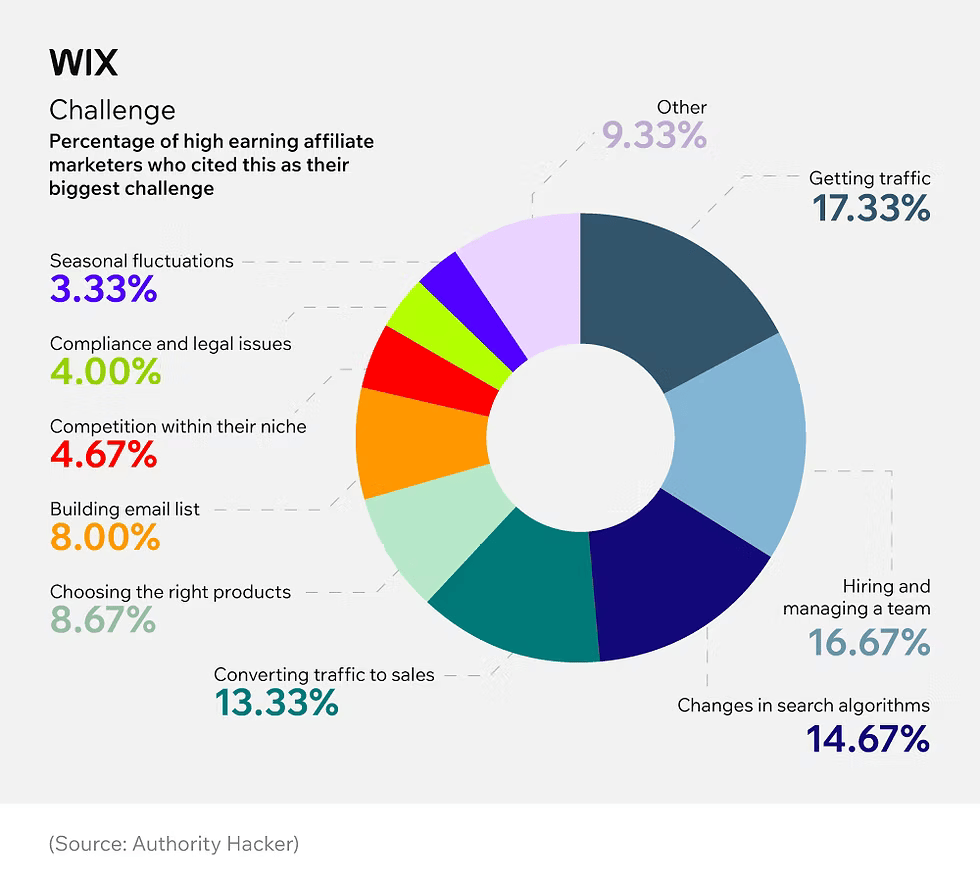
Recent Developments
- In Q1 2025, TikTok launched an affiliate-native marketplace, enabling creators to tag affiliate products directly in short-form videos.
- Amazon introduced a dynamic commission model, rewarding high-performing affiliates with escalating tier bonuses.
- Google Search Generative Experience (SGE) is impacting affiliate SEO strategies, as snippets increasingly bypass traditional affiliate listings.
- Shopify is integrated with Impact and PartnerStack, simplifying affiliate setup for store owners.
- The rise of creator commerce platforms like LTK and BuyWith has led to 52% more fashion brands joining affiliate ecosystems.
- AI content moderation tools now assist affiliate networks in ensuring content quality and compliance.
- A record $2.8 billion was paid out in commissions by the top 5 affiliate platforms in the first half of 2025 alone.
- Livestream affiliate selling surged during the Spring Shopping Festivals, with top creators earning over $100,000 in a week.
- Pinterest announced affiliate link support in Idea Pins, opening new passive income streams for visual content creators.
- The FTC released new guidelines clarifying affiliate roles in subscription-based models, focusing on transparency in renewal terms.
Conclusion
Affiliate marketing in 2025 stands at the intersection of technology, trust, and transformation. What was once a supplementary revenue channel has now become a full-fledged digital strategy, fueling businesses, empowering creators, and reshaping how consumers discover and purchase products. As AI, compliance, and platform ecosystems evolve, affiliate marketers who stay adaptive and data-driven will be poised to lead this decade’s next wave of digital commerce.
Hover or focus to see the definition of the term.








